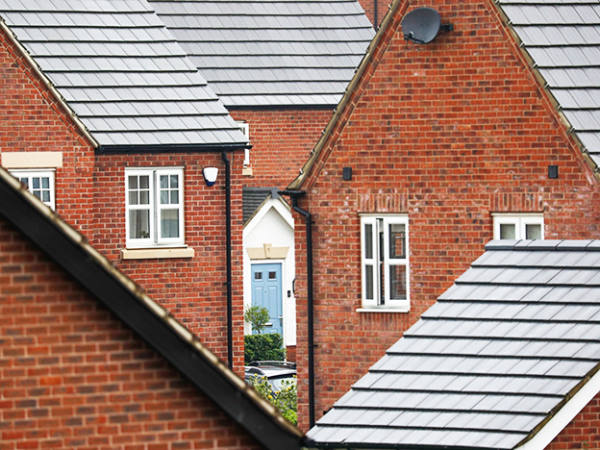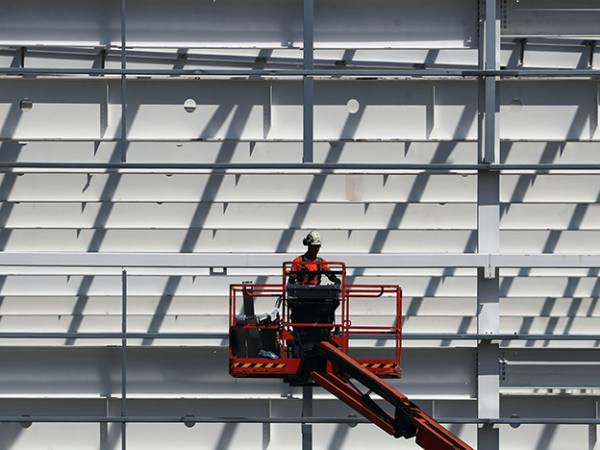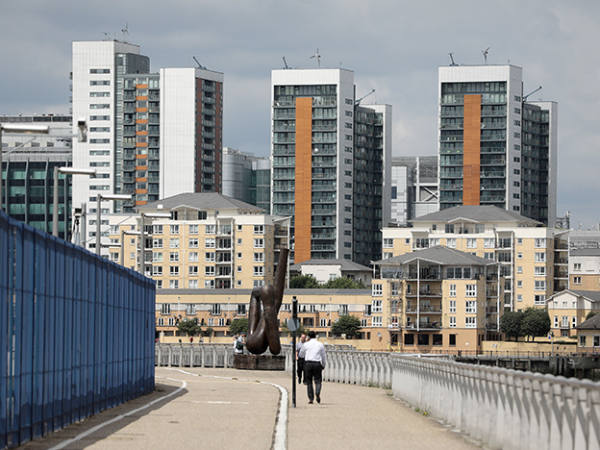- Move towards gas-free homes by 2025 is a key pillar of this Future Homes Standard
- Housebuilders have lobbied against the Future Homes Standard
- Industry is lagging in tackling the climate crisis compared with other sectors
There are some obvious reasons to be bearish about housebuilders right now. After years of big profits thanks to low interest rates, house price growth and government initiatives aimed at encouraging homeownership, they now need to navigate a housing downturn just as the Help to Buy rug is pulled from under them.
But these are cyclical problems; arguably a bigger threat to long-term earnings and the investment case is the one they will need to deal with over the coming decades as well as the coming months: going green.
The UK government has made a legally binding requirement for the whole country to have net zero greenhouse gas emissions by 2050, and has set an interim target of cutting the UK’s emissions by 78 per cent (from a 1990 baseline) by 2035. The role oil and gas producers will need to play in this has been well documented, but over the past couple of years climate protests and soaring energy prices have helped turn public attention towards the UK’s draughty flats and houses. Energy use in homes makes up 23 per cent of the UK’s greenhouse gas emissions – more than double the amount from agriculture, and nearly as much as all transport emissions.
In recognising that housebuilders must contribute not just to reducing the UK’s emissions but also to reducing its electricity bills, the government has introduced its Future Homes Standard, a requirement to be introduced in 2025 demanding that new builds are “future-proofed with low carbon heating and world-leading levels of energy efficiency”. As part of this, all new homes will need to be gas-free by 2025. Redrow (RDW) decided to go two years early by announcing last month that all its future developments will be gas-free.
It’s a positive step, but progress has been far from straightforward. Campaigners complain that the net zero housing transition has been painfully slow. The path does not look much easier either – with increased costs for housebuilders and more stringent regulation near-guaranteed.
A rocky road to zero
In 2006, the Labour government pledged that all new homes would need to be “zero carbon” by 2016. The requirement would have meant that all housing developed from 2016 would have generated as much energy on-site from renewable sources such as solar panels as they consumed from energy use.
However, the target was scrapped in 2015 and the government’s attempts to push the industry towards net zero since then have been met with criticism. When the Future Homes Standard was published in 2021, policymakers said that all homes would need to be “zero-carbon ready” by 2025, but sustainability campaign group the UK Green Building Council (GBC) argued the target should have been 2023 – a sentiment that a report by parliament’s environmental audit committee agreed with.
The move towards gas-free homes by 2025 is a key pillar of this Future Homes Standard, and the pressure to move earlier could explain Redrow’s gas-free announcement last month. As Dan Jestico from the sustainability division of Savills (SVS) puts it, the housebuilder “saw the writing was on the wall for gas boilers” and so decided to jump the gun.
Yet, moving before being pushed has not always been the housebuilders’ attitude. Persimmon (PSN) acknowledged in a select committee hearing in 2019 that it had lobbied in favour of scrapping Labour’s zero-carbon homes policy back in 2015, which the government promptly did. Other housebuilders have also lobbied against the Future Homes Standard as well as regulation mandating electric vehicle charging points in all new homes. The government has pushed forward with this regulation despite those efforts, and there is no suggestion the listed housebuilders do not follow it.
The result of this pushback against greener standards is an industry that is lagging behind in tackling the climate crisis compared with other sectors. Housing greenhouse gas emissions were cut by 1mn tonnes from 2018 to 2019, resulting in a 1 per cent drop, compared with cuts of 8.5mn tonnes (an 8 per cent drop) from energy supply and 2.5mn tonnes (a 3 per cent drop) by businesses. The government is likely to push harder to address this imbalance in future through tougher regulation on housebuilding.
| FTSE 350 HOUSEBUILDERS RANKED BY ENERGY PERFORMANCE CERTIFICATES (EPC) | |
| Name | Homes built last financial year which were EPC B or above |
| Redrow | 100% |
| Barratt Developments | 99% |
| Bellway | 98% |
| Vistry | 98% |
| Persimmon | "Almost all" |
| Taylor Wimpey | "The majority" |
| Crest Nicholson | Declined to comment |
| Berkeley Group | Declined to comment |
Price is the key reason for housebuilders’ resistance to greener homes. Going gas-free means installing air source heat pumps, which Savills’ Jestico estimates costs around £5,000 per home, rather than installing gas boilers, which he estimates costs around £2,000 each. On an industry-wide level, the Home Builders Federation (HBF) estimates that meeting all of the requirements of the Future Homes Standard will cost the industry an additional £1.9bn a year, while other climate-friendly changes to building standards could cost £1.1bn a year in the short term.
However, that estimation is based on the HBF’s current understanding on costs. For heat pumps specifically, Savills’ Jestico is optimistic that this price will come down. He says the technology used to cost around £10,000 per home and that the government has a future ambition to make it cost the same as gas boiler installation, which at its current trajectory is not too unreasonable an assumption.
Still, even if costs do come down, another issue housebuilders have is the shrinking budgets of their customers. Where commercial property developers are able to design bespoke, net-zero buildings which are let by multinational companies on long leases with added service charge costs, housebuilders are building thousands of flats and houses and selling them to a populace struggling with a cost of living crisis. In short, housebuilders – for now, at least – cannot pass additional costs onto the end user in the same way commercial developers can.
Scale is a problem, too. Housebuilders cannot modify their designs as easily as commercial developers because doing so means reconfiguring how all of their future homes are designed. For commercial developers, each new development is unique. For housebuilders, the next thousand homes need to be broadly the same for the business model to work. When asked why it hasn’t yet followed Redrow’s lead and pledged to go gas-free early, Barratt Developments (BDEV) said it “need[s] to test at scale [...] before we gradually move towards 100 per cent heat pumps”.
Then there is timing. Redrow went first on heat pumps, but that was only after the direction of travel from the government was made clear. Jestico says that most housebuilders want a level playing field and clarity from the government before moving forward. While their lobbying indicates hesitancy, the housebuilders are also keen to stress that they are willing to make progress (see boxout). Vistry (VTY) and Redrow are both members of the UK Green Building Council, while Barratt and Berkeley (BKG) are gold members. Membership – even gold membership – is not a guarantor of action, but it does show acknowledgement of the inevitable additional costs presented by the climate crisis.











